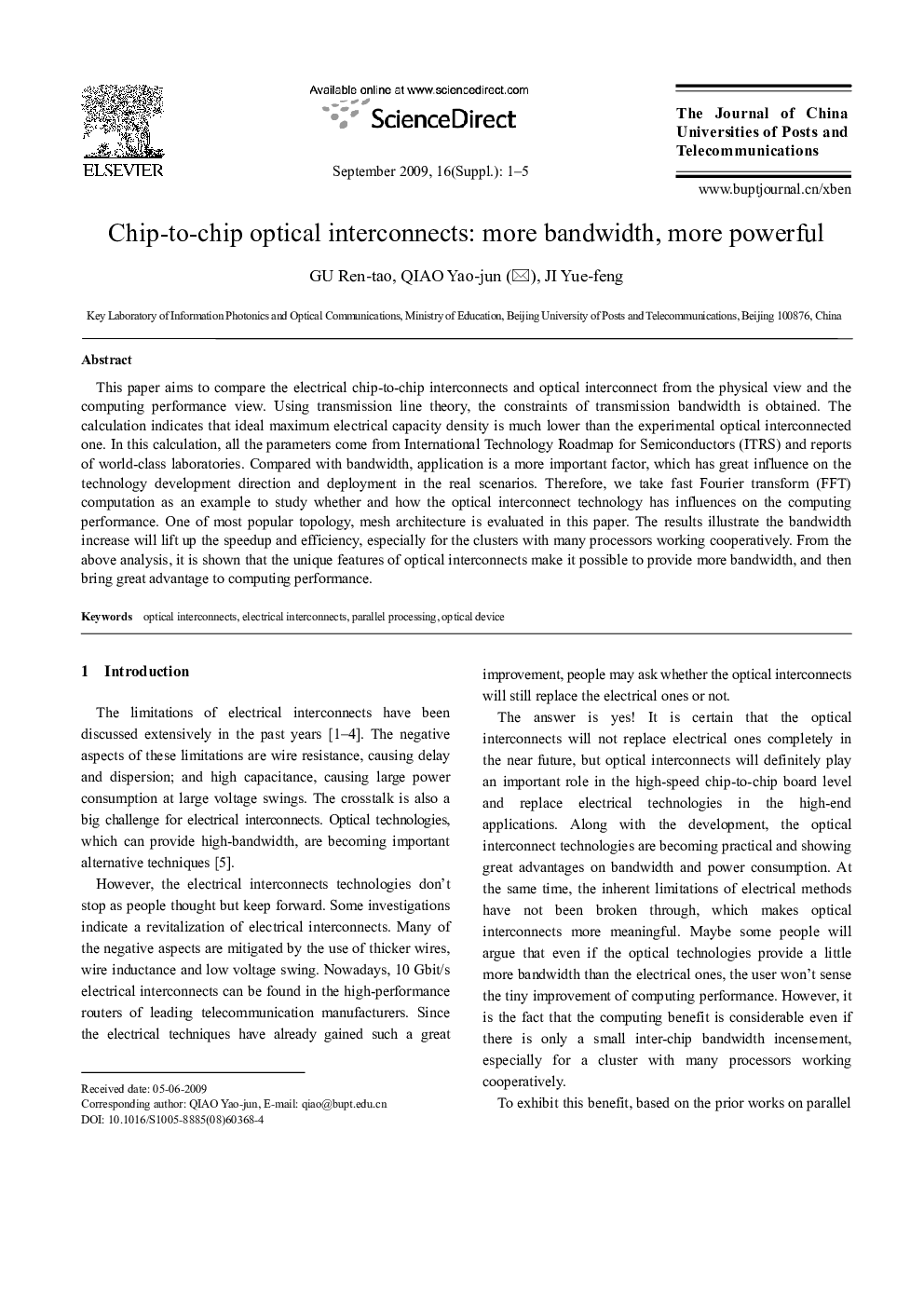| Article ID | Journal | Published Year | Pages | File Type |
|---|---|---|---|---|
| 723686 | The Journal of China Universities of Posts and Telecommunications | 2009 | 5 Pages |
This paper aims to compare the electrical chip-to-chip interconnects and optical interconnect from the physical view and the computing performance view. Using transmission line theory, the constraints of transmission bandwidth is obtained. The calculation indicates that ideal maximum electrical capacity density is much lower than the experimental optical interconnected one. In this calculation, all the parameters come from International Technology Roadmap for Semiconductors (ITRS) and reports of world-class laboratories. Compared with bandwidth, application is a more important factor, which has great influence on the technology development direction and deployment in the real scenarios. Therefore, we take fast Fourier transform (FFT) computation as an example to study whether and how the optical interconnect technology has influences on the computing performance. One of most popular topology, mesh architecture is evaluated in this paper. The results illustrate the bandwidth increase will lift up the speedup and efficiency, especially for the clusters with many processors working cooperatively. From the above analysis, it is shown that the unique features of optical interconnects make it possible to provide more bandwidth, and then bring great advantage to computing performance.
